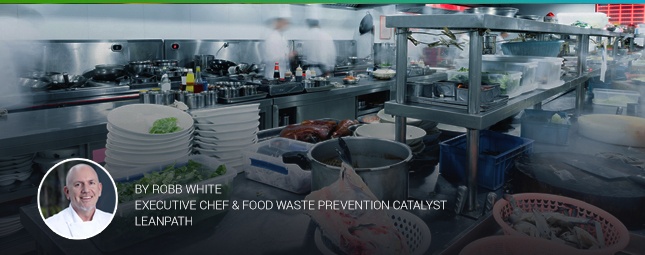Food Waste Intelligence

Food waste reduction starts with prevention—preventing the food waste from happening in the first place is the clear optimal solution from a social, environmental and economic standpoint. And the first step in prevention is measurement—understanding exactly how much food is being wasted and why, so you know where you’re starting from, can identify opportunities for improvement, and can easily track progress over time. In the ReFED Report, A Roadmap to Reduce U.S. Food Waste By 20 Percent, waste tracking and analytics is listed as one ...
Read More >>
LeanPath Leaders Meet with FAO Representatives Earlier this month we traveled to Italy with a multidisciplinary group of graduate students from the University of Pennsylvania’s Organizational Dynamics program as part of a collaborative educational effort to address global food waste.
Read More >>
Great knife skills--most chefs have them. Knives are the tools of our trade and when put in the hands of skilled craftsman, it is a beautiful thing to watch. I remember watching Iron Chef years back and witnessing Iron Chef Sakai peel an apple with a chef's knife that still amazes me to this day. The years and years it took to acquire that skill is impressive. Knife skills are the fundamental building block of any chef's career. It's the first thing that is taught to students in culinary school and it takes years to become proficient ...
Read More >>
As a chef I have had actual nightmares about running out of food. The kind of nightmares that wake you up in a sweat, with your heart beating out of your chest. The panic, the fear, the thought of facing angry customers because you are out of a menu favorite. Yep, the fear is real for chefs. With the relatively new voice of the consumer via social media—Yelp, Instagram, Facebook, blogs etc.—the chef and the restaurant are under constant scrutiny. And for many chefs, the backlash that can come from the public for an item being out on a...
Read More >>
As a follow-up to our recent webinar, “3 of the Biggest Waste Culprits in the Your Kitchen,” we’ve compiled some questions that we didn’t have time to answer. Since many of our blog readers are likely facing similar issues, we wanted to share Chef Robb’s answers with all of you here! If you have any comments or additional questions, we encourage you to post them in the comments below. Questions from our attendees:
Read More >>